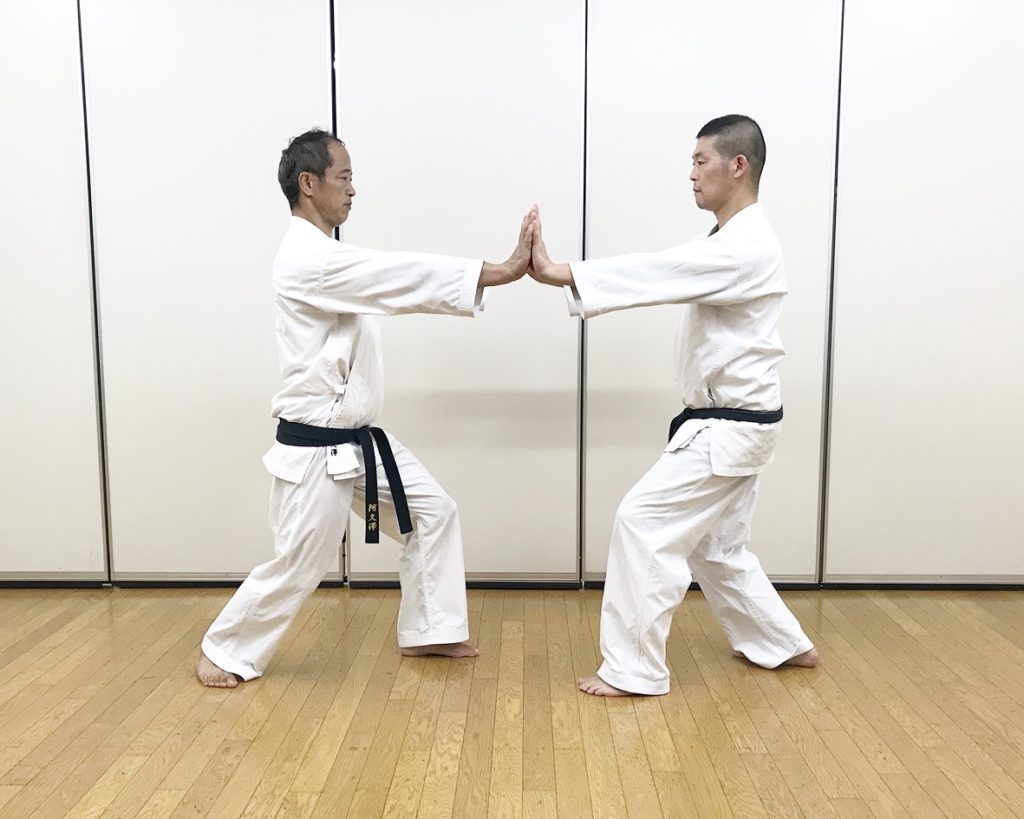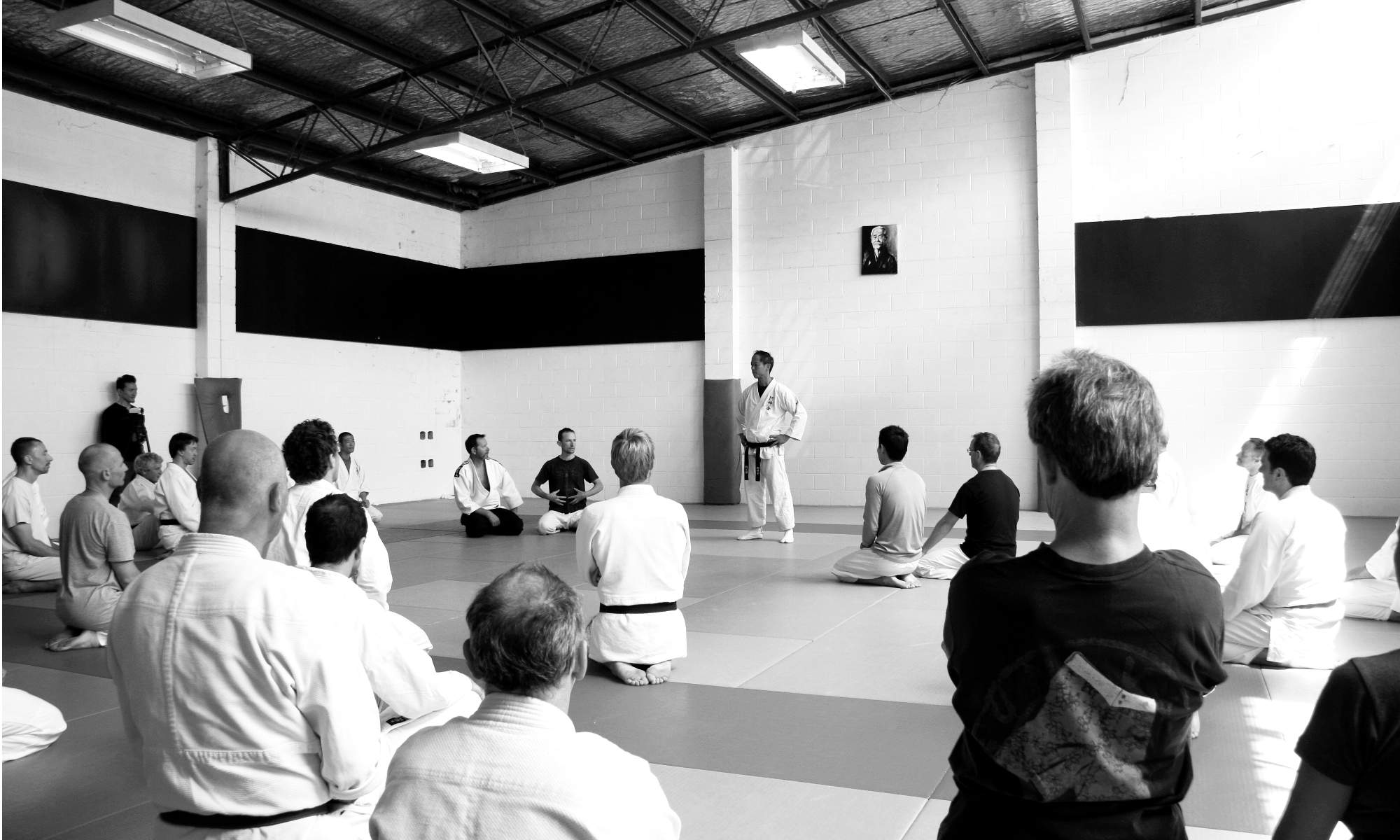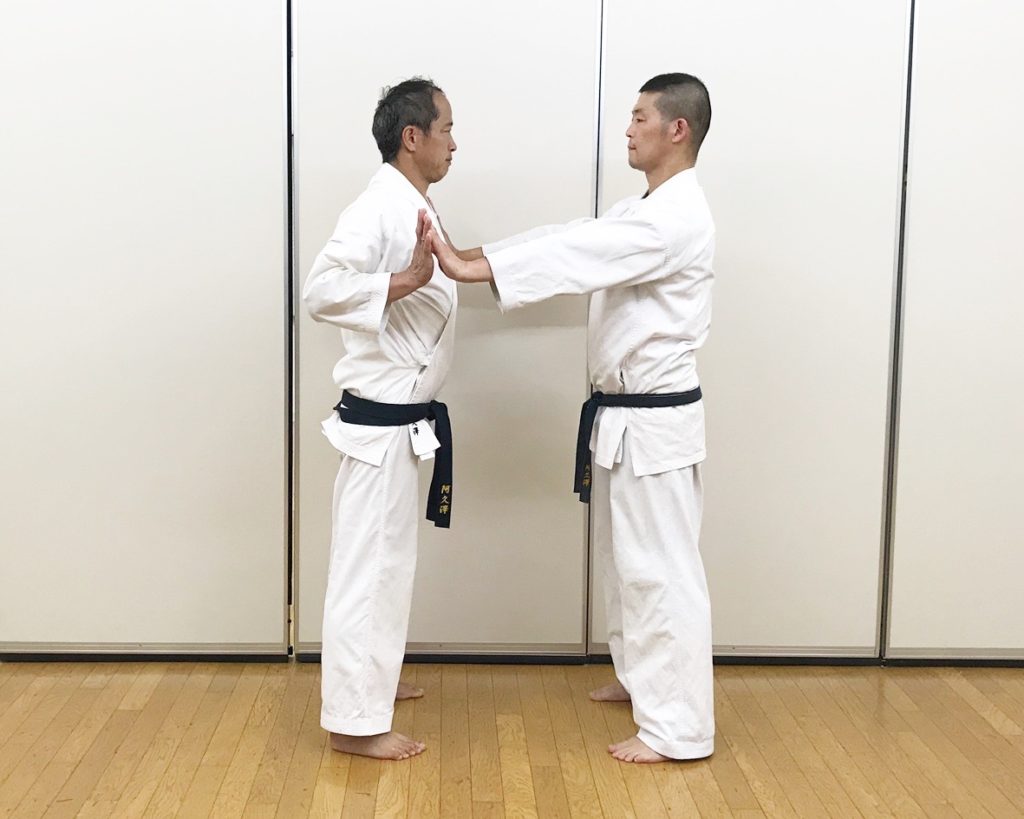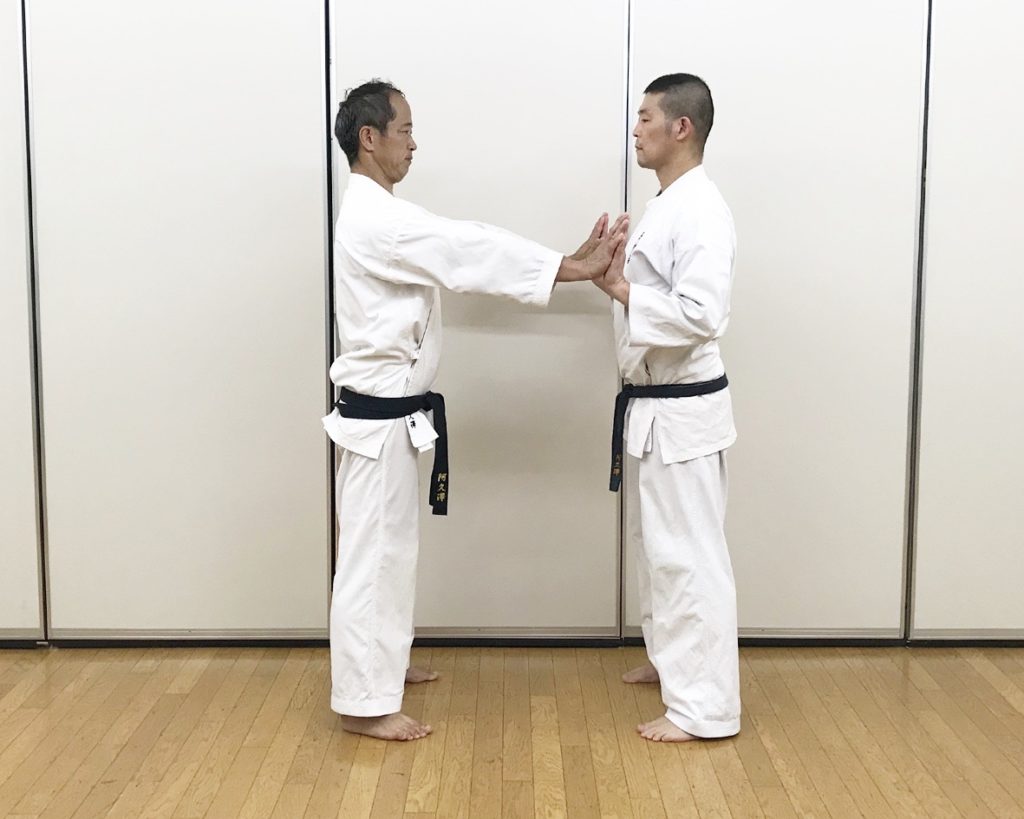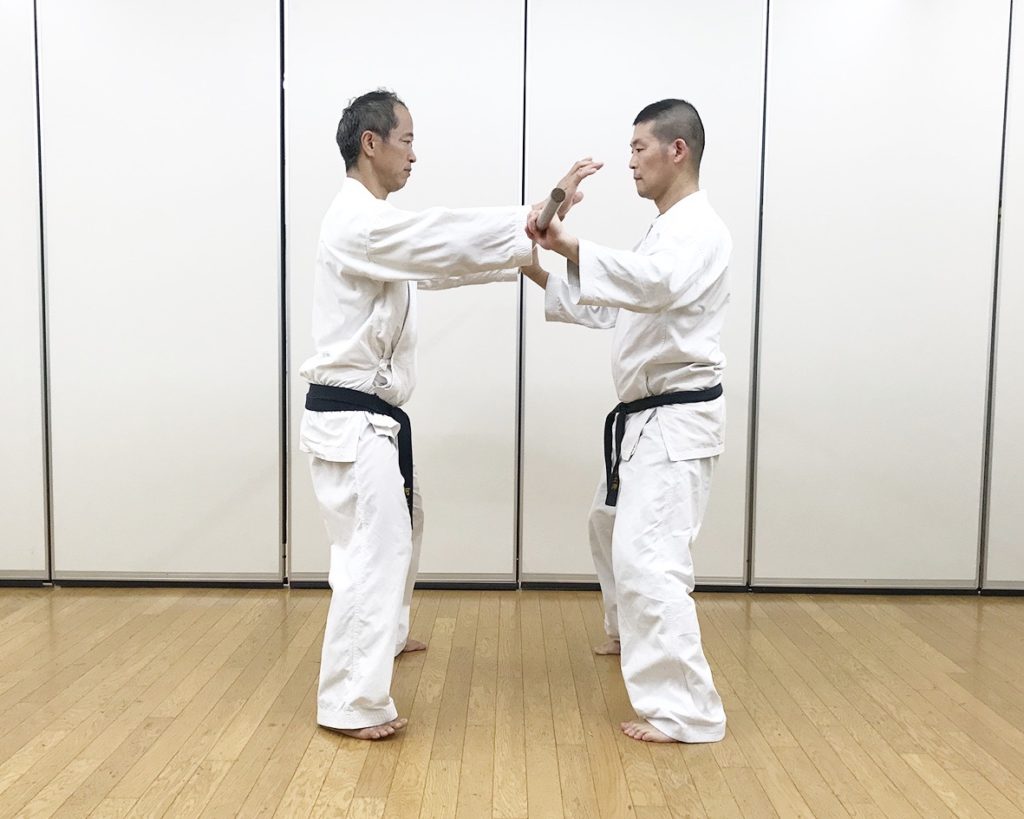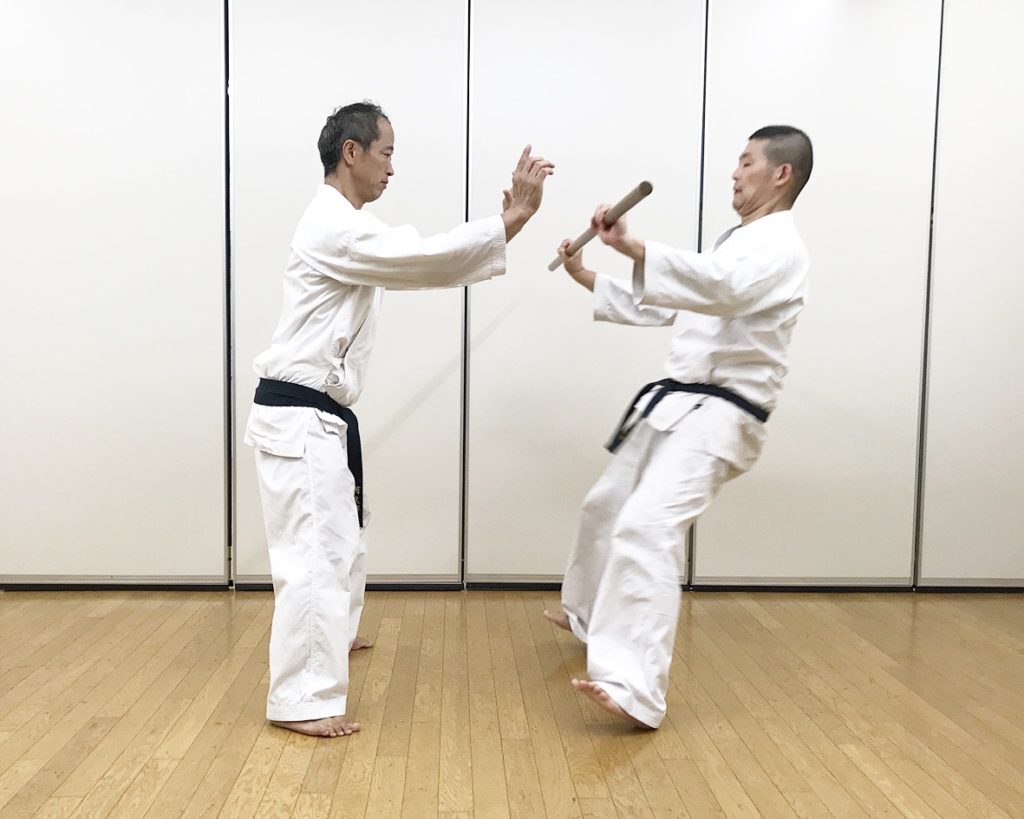This next stage allows the body, now instilled with principles learned through proper training of the frame, to learn how to send and receive force against a gradually resisting opponent. This training method, or Tanren method, is based on the Method of Hard and Soft (Goju no hou).
The Method of Hard and Soft allows the body to develop martially applicable “power”, unifying the external and internal components of the body. In reality hard and soft are one thing, therefore you can not completely separate them. As you might be able to tell from looking at a yin-yang symbol, you can see that both contain parts of each other and there is no complete distinction. They are completely intertwined in a never-ending Mobius strip-like fashion. Training with the notion of hard and soft in mind, students learn to adjust and cultivate this principle so that they can eventually manifest it physically within their body.
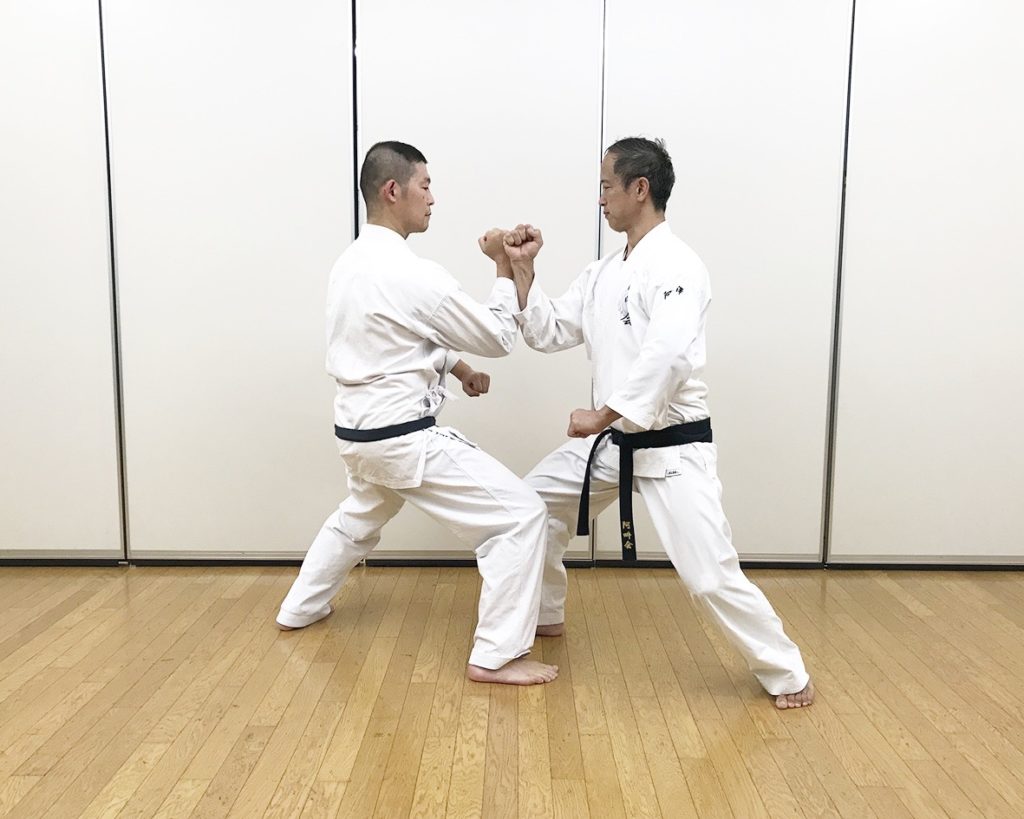
This stage also allows us to understand the difference between the commonly accepted notion of “power” or “muscular” power vs “martially usable power”. No progress can be made to further stages unless a student can identify this crucial difference.
Simply adjusting the shapes found within the “frame” training, or Tanren, will not yield any substantial results. A martially viable body is useless unless you can bring the principles found in the frame training and apply them in motion. It is important to learn how to use your body effectively, in a connected matter, each joint, muscle, sinew working in concert to affect the opponent.
Input Force, Output Force: Pushout (Sending and Receiving Force)
By studying the shape of our normal standing posture, we learn to feel how gravity works on our balance and work to eliminate any excess from the body. This refers to unconnected muscles, tendons, ligaments, joints, as well as harmonizing internal physical movement so that one movement does not overpower another. By understanding our skeletal structure, we learn the optimal placement of our joints, and how they interact against an incoming force. This is a direct way to recognize your axis as you adjust and harmonize your balance against a resisting force.
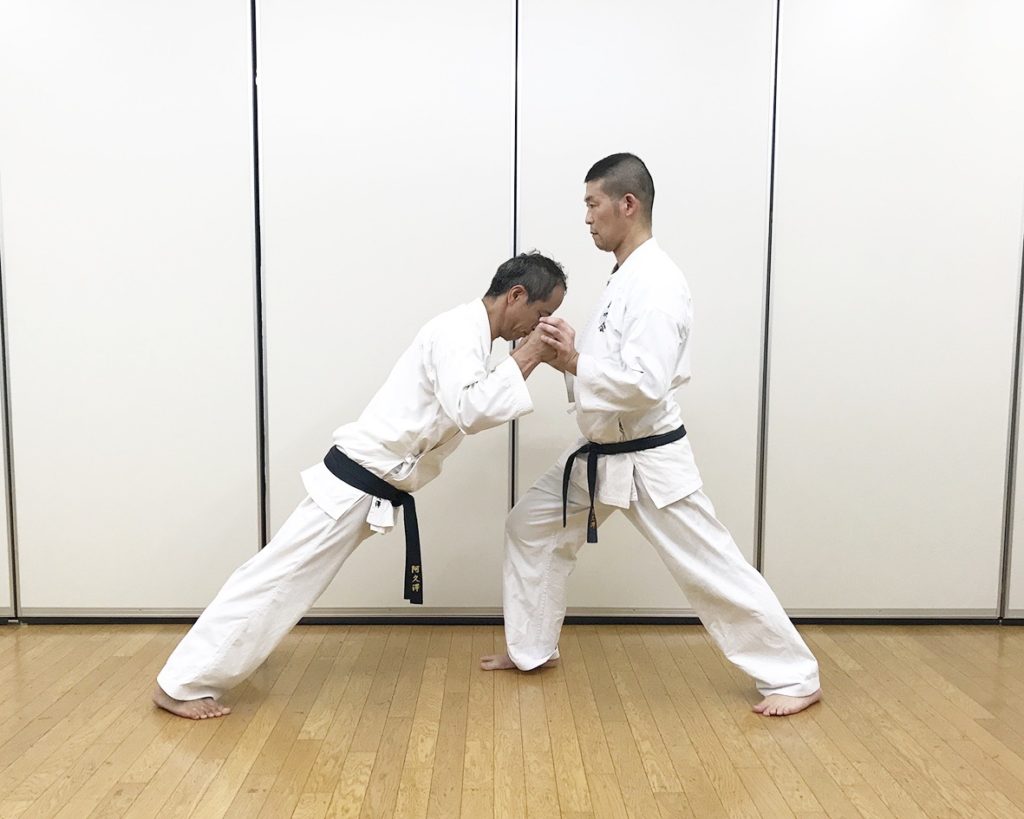
We could also say that this is a means to understand how the parts inside you move, and how to compartmentalize them in a harmonized way. By training according to the method of hard and soft, we seek the maximum effect from the minimum effort.
Walking
